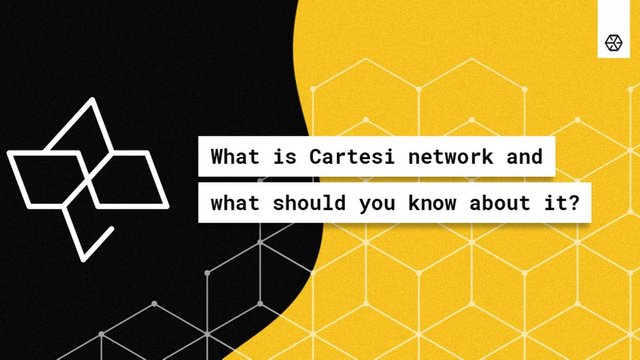
Blockchain technology and decentralized finance (DeFi) are increasingly taking root in everyday life and making financial products available to a wide range of users. But blockchain platforms are very recent, so pressing issues need to be addressed before they reach mass adoption.
One such problem is the lack of flexibility when it comes to the development of smart contracts that serve as the intellectual center of the entire DeFi ecosystem. It is smart contracts that execute user orders and eliminate the need for intermediaries such as banks, stock exchanges, insurance companies, and other financial organizations.
Cartesi Network has become a platform that seeks to solve this problem by providing the developer with flexible tools for creating smart contracts. In this article, you will learn what the Cartesi Network is and why it is so important to the blockchain industry.
What is Cartesi Network
Cartesi is an autonomous decentralized platform that offers the developer a software suite that provides the flexibility to develop second-tier decentralized applications verified by the blockchain. This means that developers can create and release applications outside of the Cartesi Network blockchain.
The platform was created in 2018 to overcome the disadvantages associated with scalability, computing resources, and infrastructure for serving decentralized applications.
The precondition for creating the Cartesi Network was the lack of infrastructure to create a fully decentralized Internet. This is a serious barrier to the adoption of blockchain technology by the global community.
In other words, there is a large technological gap between the centralized and the decentralized internet, which the Cartesi platform seeks to fill.
The Role of Cartesi Network in the Global Blockchain Ecosystem
Developers presented a versatile second-tier infrastructure based on Linux, the most popular software development environment. This allowed the use of advanced tools for programming smart contracts and solved key problems associated with dApps such as poor UX and limited functionality of DeFi protocols.
In other words, the Cartesi network acts as a bridge between the Linux infrastructure and the blockchain, leveraging all the computing power that will make it easier to develop fully functional DeFi applications. Software developers can use a full range of languages and tools: Python, REST, Ruby, MongoDB, Linux, MySQL, and many more.
This will allow the creation and development of decentralized applications for various areas: DeFi, research, logistics, medicine, automation, and machine learning, gaming, insurance, intellectual law, and much more.
Initially built on Ethereum, Cartesi is going to evolve into a blockchain agnostic. In this regard, they already established partnerships with Avalanche, Binance Smart Chain, Polygon, Elrond, and Injective Protocol to rapidly increase adoption and release the killer DApps the community is searching for.
Useful functions and properties of the platform
The virtual machine
The Cartesi Machine is one of the main components that ensure the autonomy of the blockchain network. The Cartesi virtual machine emulates a RISC-V microprocessor, allowing you to run Linux and use it to develop smart contracts and DApps.
The Cartesi Core
The Cartesi Core integrates the main protocol components such as the Cartesi Machine, the crypto protocol, and the consensus mechanism. The main feature of the Cartesi Core is that it uses internal and external components for computation. The load on the blockchain is reduced since Cartesi Core takes some of the calculations (which do not need a blockchain) to the outside of it.
Adaptability
The logic of the Cartesi Network protocol is built based on the Linux OS, which not only provides developers with a wide range of tools (devtools) but also makes available the familiar standards and software stacks for developing blockchain-oriented applications.
Cartesi Cryptonomics
For DApps to effectively interact with each other, Cartesi uses economic incentives. The network consists of computing nodes (validators) that are responsible for the security of the ecosystem and check the blocks of transactions for validity. Each user can delegate their CTSI tokens to the validator to be eligible for rewards that are generated from the reserve and commissions paid for transactions.
Everstake and the role it plays in the Cartesi Network’s future
Everstake is a large staking provider run by a team with years of experience in blockchain, banking, and fintech development. The Everstake team serves over 45 blockchains as a validator in such networks as Ethereum (testnet), Cosmos Network, Cardano, Tezos, Solana, Polkadot, Elrond, and many more.
Everstake Statistics:
Over $ 3.5 Billion of Stakeholders;
365 thousand active users who delegated their assets with Everstake;
99.9% average uptime.
Everstake provides convenient tools for monitoring staked assets to its delegates. You can track staking statistics on the Everstake website or the Telegram bot.
The Everstake team believes in the future of the Cartesi Network and believes that the platform will play an important role in the development of a universal DeFi infrastructure that can work independently of and along with centralized solutions. Therefore, Everstake is interested in participating as a validator and actively supports the platform, helping it to remain secure and decentralized.